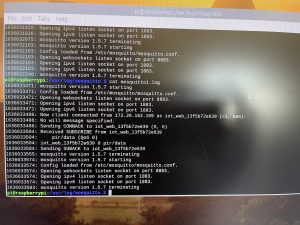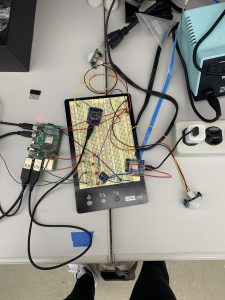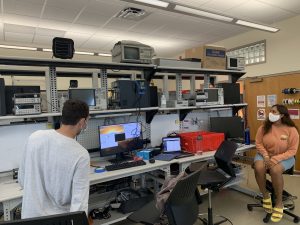This week I worked on integrating the sensor values into the code I wrote last week.
As a group we debugged getting messages sent from the web app to the raspberry pi using mosquitto protocol. After testing the microphones we decided on using the one with a potentiometer that controls the “sound” threshold and output a digital signal. It seems sensitive enough for our test case and provides the most reliable data. It also allows us to insure anonymity and privacy. We are currently able to send appropriate sensor data to a LED on the board that represents a base station.
For the interim demo: I have a working station that sends signals to the raspberry pi and for which the raspberry pi behave accordingly. I almost have the sensor data being sent directly from a microcontroller to the raspberry pi, but I hope to finalize that tomorrow (Sunday) before the demos on Monday. Next week I hope for us to be able to scale up to at least two base stations, start placing the various sensors around the room, and more elaborately incorporating the options from the web app.












 This is an example of the results from one of the tests:
This is an example of the results from one of the tests:


